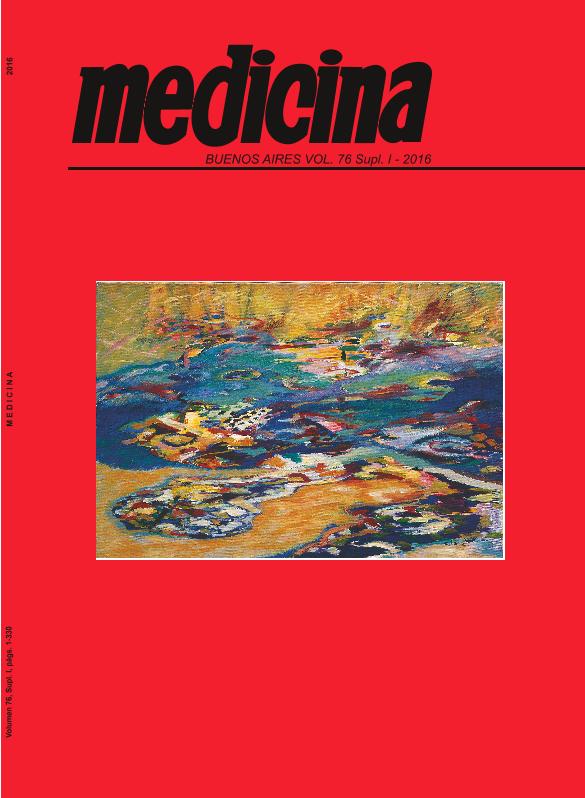Evento
Develop and rheological study of a thermoresponsive and mucoadhesive in situ gel based on Poloxamer 407-Chitosan as vaccine delivery system of polymeric antigen BLSOmp31
Díaz, Alejandra Graciela ; Quinteros, Daniela Alejandra
; Quinteros, Daniela Alejandra ; Gutiérrez, Silvina Elena
; Gutiérrez, Silvina Elena ; Palma, Santiago Daniel
; Palma, Santiago Daniel ; Allemandi, Daniel Alberto
; Allemandi, Daniel Alberto ; Zylberman, Vanesa
; Zylberman, Vanesa ; Goldbaum, Fernando Alberto
; Goldbaum, Fernando Alberto ; Estein, Silvia Marcela
; Estein, Silvia Marcela
 ; Quinteros, Daniela Alejandra
; Quinteros, Daniela Alejandra ; Gutiérrez, Silvina Elena
; Gutiérrez, Silvina Elena ; Palma, Santiago Daniel
; Palma, Santiago Daniel ; Allemandi, Daniel Alberto
; Allemandi, Daniel Alberto ; Zylberman, Vanesa
; Zylberman, Vanesa ; Goldbaum, Fernando Alberto
; Goldbaum, Fernando Alberto ; Estein, Silvia Marcela
; Estein, Silvia Marcela
Tipo del evento:
Reunión
Nombre del evento:
LXI Reunión Anual de la Sociedad Argentina de Investigación Clínica; LXIV Reunión Anual de la Sociedad Argentina de Inmunología; XLVIII Reunión Aual de la Sociedad Argentina de Farmacología Experimental; VII Reunión Anual de la Sociedad Argentina de Nanomedicina y V Congreso Nacional de la Asociación Argentina de Ciencia y Tecnología de Animales de Laboratorio
Fecha del evento:
15/11/2016
Institución Organizadora:
Sociedad Argentina de Investigación Clínica;
Sociedad Argentina de Inmunología;
Sociedad Argentina de Farmacología Experimental;
Sociedad Argentina de Nanomedicina;
Asociación Argentina de Ciencia y Tecnología de Animales de Laboratorio;
Título de la revista:
Medicina (Buenos Aires)
Editorial:
Fundación Revista Medicina
ISSN:
0025-7680
Idioma:
Español
Clasificación temática:
Resumen
The polymeric antigen BLSOmp31 emulsified in Incomplete Freund Adjuvant by parenteral route conferred significant protection against brucellosis in lambs. Conjunctival immunization with this chimeric protein could generate effective immunity at the major portals of entry for Brucella ovis. To achieve this, the immunogen BLSOmp31 needs to be associated to an appropriate delivery system. The aim of this study was to develop and characterize a thermoresponsive and mucoadhesive in situ gel as vaccine delivery system for BLSOmp31. Methods: Poloxamer 407 (16% w/v) was added to an aqueous solution of BLSOmp31. To enhancethe mucoadhesive capability of the formulation, chitosan (0.25 % w/v in 0.5% acetic acid solution) was added. All reagents were dispersed at 20ºC and then mixed on a magnetic stirrer (4ºC) until a homogeneous solution was obtained. Rheological studies were performed to determine the sol-gel transition temperature and to evaluate the viscosity at 37°C. Measurements were carriedout using an Anton Paar MCR 301 rheometer (from 0 to 50°C). To evaluate the diffusion of BLSOmp31 out of the gel in aqueous media, the formulation was cooled at 37°C in a water bath. When the temperature inside the tube reached 37°C and gelation occurred, PBS (pH 6.85) was incorporated with mild magneticstirring. At selected time intervals (0 to 270 min) samples were withdrawn. BLSOmp31 released from the gel was determined by a capture ELISA. Results and conclusions: This formulation showed a reverse thermogelation in which aqueous solution was free-flowing liquid at room temperature and formed a stable gelat 37°C. The profile of release BLSOmp31 from P407-Ch gel was slow at the beginning and then it began to increase (50% ofBLSOmp31 was released after 210 min). The results indicate thatthe mixture solution developed presents an appropriate behavioras a thermoresponsive delivery system, a good viscosity andcould be able to deliver structurally intact immunogen BLSOmp31.
Archivos asociados
Licencia
Identificadores
Colecciones
Eventos(CIVETAN)
Eventos de CENTRO DE INVESTIGACION VETERINARIA DE TANDIL
Eventos de CENTRO DE INVESTIGACION VETERINARIA DE TANDIL
Eventos(UNITEFA)
Eventos de UNIDAD DE INVESTIGACION Y DESARROLLO EN TECNOLOGIA FARMACEUTICA
Eventos de UNIDAD DE INVESTIGACION Y DESARROLLO EN TECNOLOGIA FARMACEUTICA
Citación
Develop and rheological study of a thermoresponsive and mucoadhesive in situ gel based on Poloxamer 407-Chitosan as vaccine delivery system of polymeric antigen BLSOmp31; LXI Reunión Anual de la Sociedad Argentina de Investigación Clínica; LXIV Reunión Anual de la Sociedad Argentina de Inmunología; XLVIII Reunión Aual de la Sociedad Argentina de Farmacología Experimental; VII Reunión Anual de la Sociedad Argentina de Nanomedicina y V Congreso Nacional de la Asociación Argentina de Ciencia y Tecnología de Animales de Laboratorio; Mar del Plata; Argentina; 2016; 326-327
Compartir



